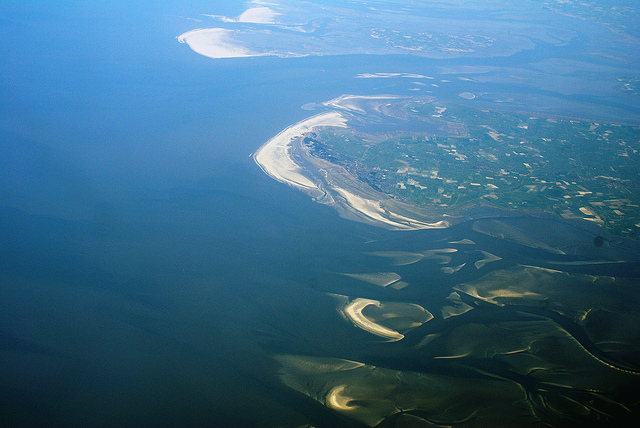Appear to walk on water at Wadden Sea.
- Wadden Sea is a large body of shallow water in the North Sea, off the coast of Northwest Europe.
- Wadden Sea is the home of many islands called the same name that are also known as ‘Frisian Islands’.
- Wadden Sea is an intertidal zone, and the “largest unbroken system of intertidal sand and mud flats” on earth, and it includes kilometres of mud flats, channels, sand banks and salt marshes.
- Wadden Sea is located on the coast of three countries – Germany, Denmark and the Netherlands; and the countries cooperatively protect the area.
- Ever since 2009, Wadden Sea has been a UNESCO World Heritage Site.
Netherlands part of Wadden Sea
Image courtesy of Eutrophication & Hypoxia /Flickr
- Wadden Sea has an area totalling just under 10,000 square kilometres (3,861 square miles), and covers a distance of 400 km (248 miles).
- Wadden Sea is the migration site of up to 12 million birds of more than 30 species, and is a significant nesting area, and moulting area for numerous birds.
- Wadden Sea is popular for beach activities, including swimming, as well as bird watching, boating, cycling, seal watching, and mudflat hiking site.
- The Wadden Sea area is home to more than 5,000 different species of animals and plants, with some being seals, porpoises and, historically, whales.
- The name ‘Wadden Sea’, comes from the Dutch word ‘wad’, meaning ‘mudflat’.
Bibliography:
Wadden Sea, 2014, UNESCO World Heritage, http://whc.unesco.org/en/list/1314
Wadden Sea, 2014, Wikipedia, http://en.wikipedia.org/wiki/Wadden_Sea
About the Wadden Sea, 2013, Common Wadden Sea Secretariat, http://www.waddensea-worldheritage.org/wadden-sea-world-heritage/unique-its-kind







